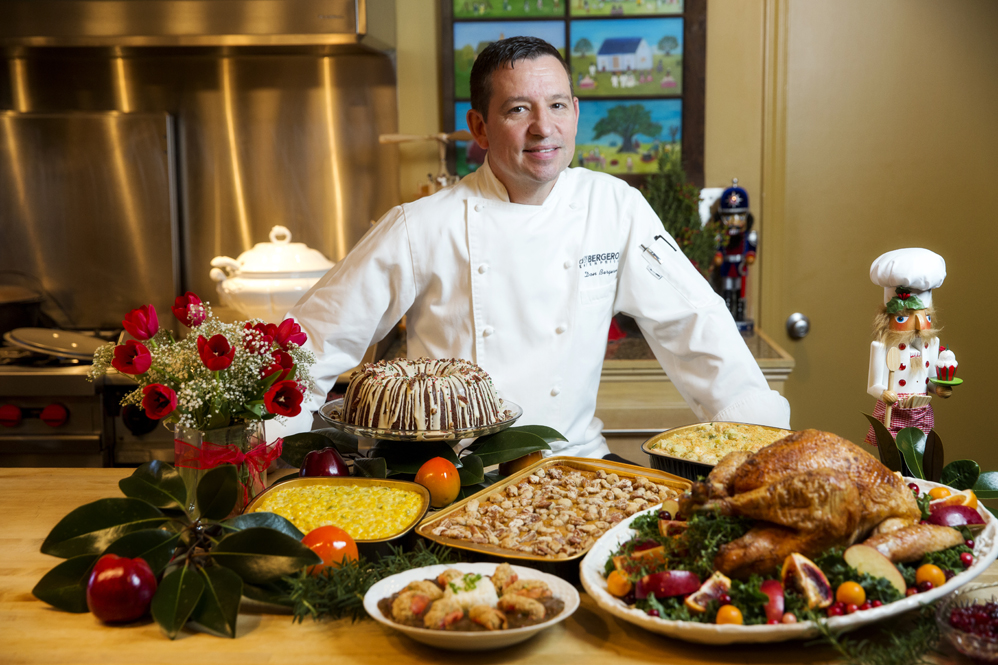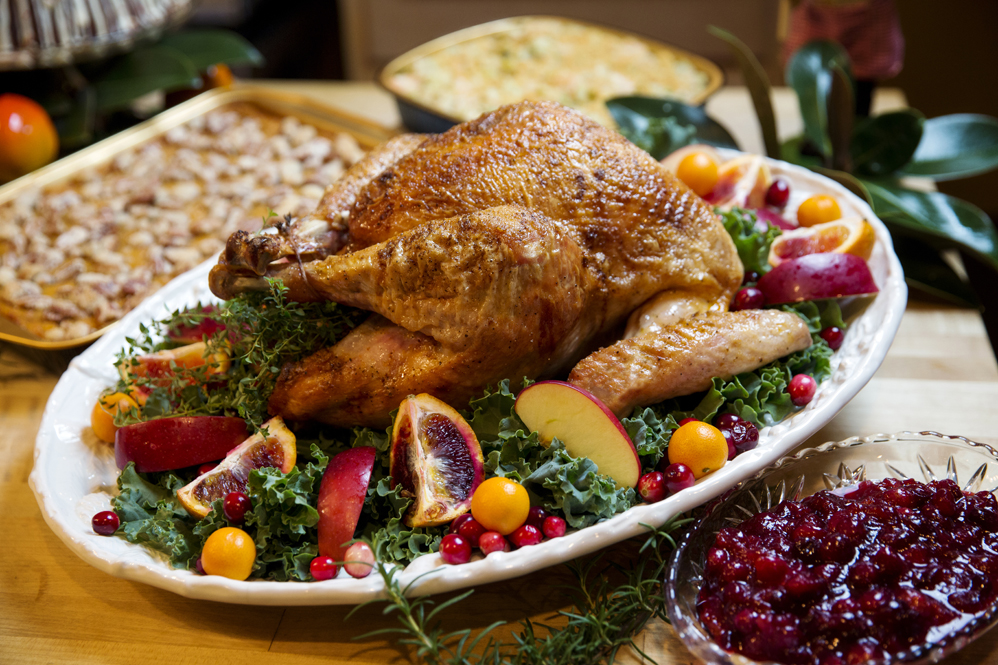
Tips for tackling that Thanksgiving turkey, according to Don Bergeron and other Baton Rouge chefs
Nearly every classic Thanksgiving spread includes some version of turkey, whether roasted, fried or stuffed turducken-style. Clearly, not all birds are prepared equally. Most of us have tasted at least one bad turkey in our lives—too dry, undercooked or burnt to a crisp. But with the help of some Baton Rouge chefs, we found some ideas to ensure the Thanksgiving staple tastes better than ever this season.
Buy two smaller turkeys instead of a single oversized one
Chef Don Bergeron of Bergeron’s City Market says buying an oversized turkey may not be the best bet when serving a large group of people. Instead, roast two smaller turkeys, which can help preserve the meat’s flavor and leave you with enough leftovers to feed the family for days. “As long as you have enough leftovers for turkey sandwiches and gumbo, you are good to go,” he says.
Brining is where it’s at for flavor
“Brining my turkey is a must,” says Therese Albornoz, majority whip of Gov’t Taco and culinary director of Jay Ducote Hospitality Group. It’s a quick and easy extra step that’s totally worth the effort.”
|
|
Brining is the process of soaking the entire bird in a salt bath before cooking—usually overnight—that keeps the turkey juicy and tender.
Keep seasoning simple
Bergeron lives by one rule when it comes to the main dish: “Don’t overthink your turkey for Thanksgiving.” He likes to focus on simple, natural flavors when it comes to poultry.
After picking up the turkey—or turkeys—and removing the innards, it’s time to moisten the meat and get it ready for seasoning. “Rub the turkey inside and out with softened butter—lots of butter,” Bergeron says. He keeps the seasoning simple by generously adding salt, black pepper and cayenne. Pro tip: “When you think it’s seasoned well, sprinkle with a bit more,” he says.
Another pro tip, this time from Albornoz: Throw in some aromatic herbs and peppercorns to infuse the turkey with an extra boost of flavor.

Make that bird multitask
Go back and use the innards in a stock for turkey gravy to enhance the gravy’s flavor, Bergeron advises, so all parts of the bird can be incorporated into the meal. And for the best vegetable sides, place the turkey in an oven-proof baking pan and add a mirepoix of chopped onions, carrots and celery to the cavity of the bird and in the bottom of the pan. Cooking the vegetables with the turkey itself allows them to soak up the meat’s juices and soften as everything cooks.
Don’t be afraid to add some fat
Ryan André, executive chef at Soji: Modern Asian, says to keep it simple … but maybe splurge on some duck fat, too.
“When it comes to turkey, I don’t do anything out of the box. Of course, fried turkey is my preference, and if I can get my hands on enough duck fat then I like to fry it in duck fat to increase the depth of flavor on it.”
Check your temperature
When everything is ready to go in the oven, roast at 325 degrees uncovered (preferably in a convection oven) for 15 minutes per pound or until the internal temperature reaches 165-170 degrees in the thickest part of the turkey. “Try to have your turkey cooked at least one hour prior to serving,” Bergeron says, “leaving time for it to rest and cool some until it’s time to carve.”
The outcome should be a flavorful, moist turkey with delicious sides to match. But if not, Bergeron has one more tip for at-home turkey chefs everywhere: “When in doubt, just get one from your local caterer already cooked and ready to serve. Gravy and sides, too.” (We have tips for that here, as seen in a previous edition of 225 Dine. But hurry, some caterers stop taking orders soon!)
|
|
|
